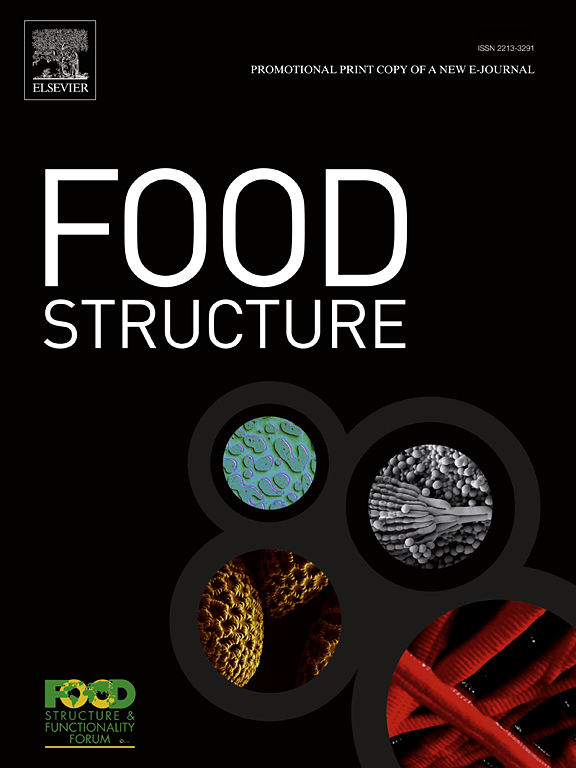Evaluation of the performance of physically processed bean flours in gluten-free cake production
IF 5.9
3区 农林科学
Q1 FOOD SCIENCE & TECHNOLOGY
引用次数: 0
Abstract
Performance of physically processed bean flours was evaluated in gluten-free cake production. Cakes prepared using unprocessed, dry heat (DH) treated, extruded and high pressure processed (HPP) bean flours were compared with chlorinated wheat flour cakes using instrumental and sensory analysis. Cake characteristics were related to differences in the content and structural makeup of starch and protein in flours. RVA testing in sucrose solution was explored as a quick and effective way to assess structure development potential of bean flour for cakes. Notably, DH bean flour contained intact starch granules embedded in a modified protein matrix and developed the highest viscosity in sucrose solution upon hydrothermal treatment. Cakes prepared using DH bean flour, therefore, were closer in structure to chlorinated wheat flour cakes. Instrumental analysis depicted that all bean flour cakes were darker, harder, less cohesive and inferior in terms of their pore structure to chlorinated wheat flour cakes. Sensory analysis showed that all bean flour cakes were significantly different from chlorinated wheat flour cake in appearance, flavour and texture. Although the processed bean flour cakes differed evidently from the chlorinated wheat flour cake, this study showed that physical processing of bean flour improved its functionality in gluten-free cake production.
物理加工豆粉在无麸质蛋糕生产中的性能评价
对经物理加工的豆粉在无谷蛋白蛋糕生产中的性能进行了评价。用未加工、干热(DH)处理、挤压和高压(HPP)处理的豆粉与氯化小麦粉蛋糕进行了仪器和感官分析比较。蛋糕的特性与面粉中淀粉和蛋白质的含量和结构组成的差异有关。探讨了在蔗糖溶液中进行RVA测试,作为评价蛋糕用豆粉结构开发潜力的一种快速有效的方法。值得注意的是,DH豆粉含有完整的淀粉颗粒,包埋在改性的蛋白质基质中,经水热处理后在蔗糖溶液中粘度最高。因此,用DH豆粉制备的蛋糕在结构上更接近于氯化小麦粉蛋糕。仪器分析表明,所有的豆粉蛋糕颜色更深,硬度更大,黏结性更差,孔隙结构不如氯化小麦粉蛋糕。感官分析表明,所有豆粉蛋糕在外观、风味和质地上都与氯化小麦粉蛋糕有显著差异。虽然加工后的豆粉蛋糕与氯化小麦粉蛋糕存在明显差异,但本研究表明,对豆粉进行物理处理可以提高其在无谷蛋白蛋糕生产中的功能。
本文章由计算机程序翻译,如有差异,请以英文原文为准。
求助全文
约1分钟内获得全文
求助全文
来源期刊

Food Structure-Netherlands
Chemical Engineering-Bioengineering
CiteScore
7.20
自引率
0.00%
发文量
48
期刊介绍:
Food Structure is the premier international forum devoted to the publication of high-quality original research on food structure. The focus of this journal is on food structure in the context of its relationship with molecular composition, processing and macroscopic properties (e.g., shelf stability, sensory properties, etc.). Manuscripts that only report qualitative findings and micrographs and that lack sound hypothesis-driven, quantitative structure-function research are not accepted. Significance of the research findings for the food science community and/or industry must also be highlighted.
 求助内容:
求助内容: 应助结果提醒方式:
应助结果提醒方式:


